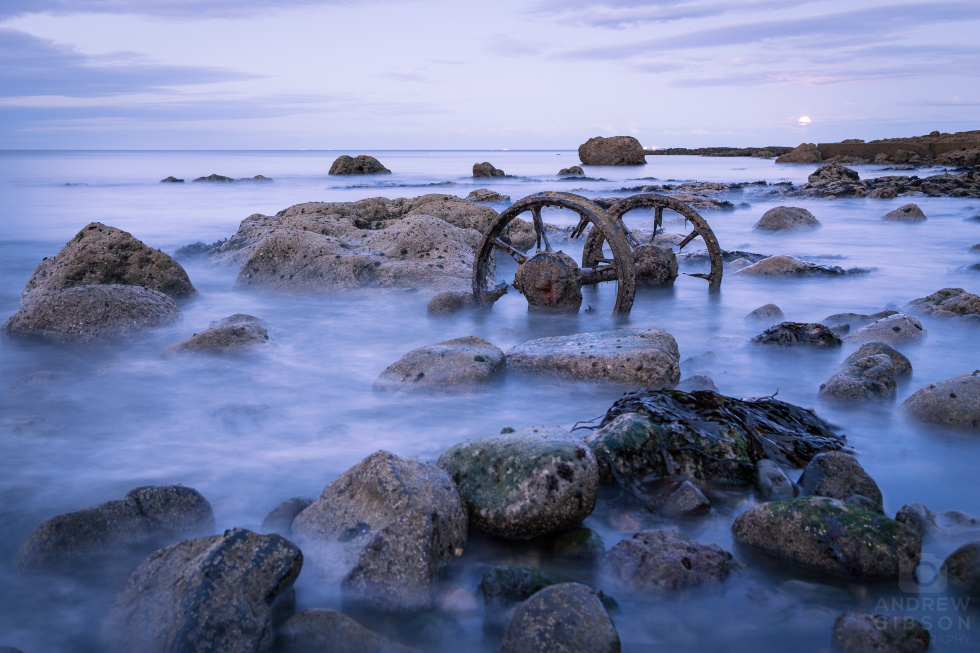I find the sea to be a very calming thing in an otherwise increasingly jarring world, so when I travel about the country I’m usually not that far away from the waters’ edge. The Durham coastline was a new bit of it for me to explore though, and one steeped in – and in parts scarred by – its fascinating industrial history. Which as regular readers will know is very much an added bonus for me.
By the time I got to Hartlepool I hadn’t had a day off work in six months, and I hadn’t taken the camera out since the night before the lockdown back in March. Aside from being extremely busy with the day job there didn’t really seem to be any point – nobody was allowed to go anywhere. But it felt good to finally be away, entertaining myself, drinking in the sea air and taking photographs…
I’ve had the Seaham wheels (main image above) pinned for quite a while – ideally for a vibrant sunrise shot – but I was only in the area for five days and the tides were all wrong to capture them that way. There was only one viable alternative that might just work, at twilight on the first night…
Clambering down the cliffs at Chemical Beach as the sun sank behind me I did wonder if I’d manage to get back up again in the dark, but I pressed on regardless and eventually spied what I deduced to be the tip of the wheels in the gloomy sea. I was right – but it was still almost two hours before low tide and there was no guarantee the tide would reveal the wheels before the light went completely. The daylight faded around me for another hour until I got the shot I wanted, the ambient light of the distant Seaham harbour casting enough light from the north while the moon began to rise in the south. A quick look at the LCD screen suggested the 10 second exposure at f6.3, ISO400, had delivered something pleasing.
Now an hour after sunset and with the beginnings of that moonrise obscured by cloud to the south, I packed up and retreated along the beach with some urgency to make my own ascent. Glancing round a few minutes later I saw the most enormous orange Sturgeon Moon low in the southern sky, casting a column of orange light across the water in such a way that would have given my shot a unique extra dimension. But alas, it was too late to go back for it.
The enigmatic wheels looked eerie but serene in the moonlight, a thought-provoking reminder of the heavy industry that dominated this county and these beaches in particular. The coal that made up the backbone of the Durham economy was moved around in chaldron wagons, but just how a single solitary set of wheels ended up in the sea here is a mystery. Although it wasn’t unheard of for things to be tipped over the cliffs…
On the other side of Nose’s Point to the immediate south of Chemical Beach colliery waste was indiscriminately tipped over the edge at a rate of 2.5 million tonnes per year, Dawdon Colliery perched right on the precipice of what was one of the most polluted stretches of coastline in the world. My next stop, on a beautiful sunny day, was Blast Beach…

In case you’re wondering at this point, the beaches came to be named after the historic industries that abutted them. The blast furnaces closed in 1865 and were superseded by a chemical works and bottle works. Even now you can find bits of glass in the sand nicely rounded and smoothed by years of tidal action, but of course it’s coal that remains so firmly in peoples’ memory.
After the colliery closed in 1991 – along with the other remaining ones on this section of coastline – the legacy of black polluted beaches was all too apparent to people that hadn’t even noticed it before, and like the industry itself steps were taken to remove all trace from the land. You wouldn’t know it now but for the most part it was simply taken back up the hill, spread across the colliery sites, capped and landscaped. The shoreline is much cleaner these days but iron stained rocks are prolific along the full stretch here, while some water pools appear alien-like with their vivid red and purple colourings and make for a striking picture, as above.
Back down the coast and just to the north of Hartlepool sits Steetley Pier, the last remaining bit of the former magnesite works that like so many other things, is now a housing estate…
I spent a good few hours here just watching the tide coming in and trying to capture the softened waves by way of a 6-stop filter that let me extend the shutter speed to one second, plus a 0.9ND grad filter for the sky. It was so calming I went back the following afternoon just as the tide was approaching its highest to have another go. Many different froth patterns in the sand resulted, here’s just one example:

Like all the beaches round here Steetley is streaked black with the coal particles that still wash ashore, while further down at Hartlepool there looked to be more coal than sand in places. And while we’re talking about Hartlepool, here are a couple of creative long exposure shots I took at dusk one evening when the fast moving clouds were turning various hues of pink and purple…
Hartlepool Harbour:
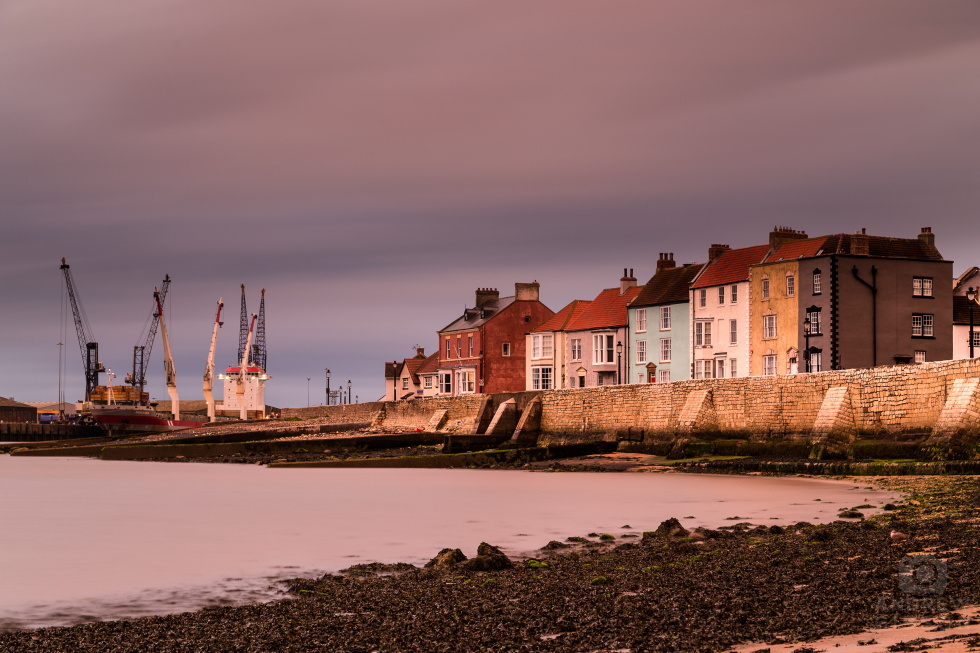
St. Hilda’s Church:

Back on the road and heading north to the border with Gateshead, the Tanfield Railway lays claim to being the world’s oldest. The Marley Hill shed remained open until 1970 and its workshops are still able to carry out an overhaul on an engine, but it was the adjacent yard that had brought me here, it being full of locomotives in various states of poor repair hiding in the overgrowth.
Surrounded by tranquility and industrial heritage I was in my element and for an hour or so I took in all it had to offer, waiting for the sun to shine on them so I could run around frantically trying to capture them in their best light. I’ve selected just four shots here that all relate to the area’s past and after trawling the often contradictory internet described what I understand them to be…
R&W Hawthorn’s works no. 3 (pictured below right) was built in 1884 for the Tredegar Wharf Co. in Newport. In 1937 it was sold to a wagon builders in Lanarkshire before arriving at Marley Hill in 1979. On its left is no. 44, formerly of Backworth Colliery and built in 1953 some years after Hawthorn’s merger with Robert Stephenson & Company.

Next, Robert Stephenson & Hawthorn’s no. 48 was built in 1957 to work on the Northumberland coalfields. It sits on the outer reaches of the yard surrounded by skeletal carriages and wagons:
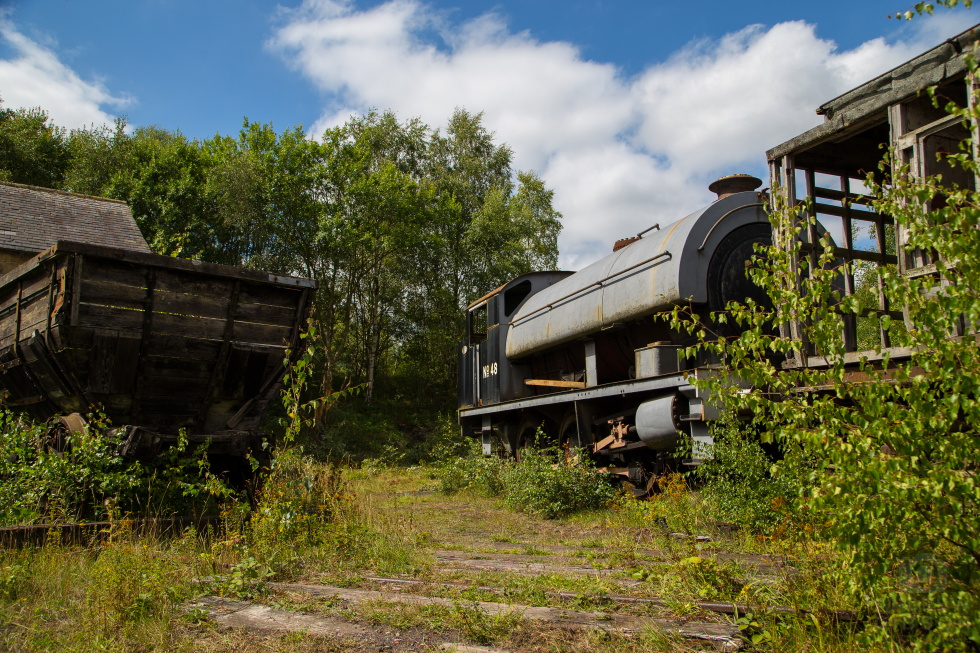
The Sentinel Waggon Works No. 9559 was built in 1953 for the Rugby Portland Cement Company, before also making its way up to Pickering’s Wagon Works in Lanarkshire. It too has been here since 1979:

Finally the engine below is one of ten engines built at Robert Stephenson & Hawthorns’ Darlington Works in 1951 for shipping from Middlesbrough Docks to the Tasmanian Government Railway in Australia. This one has made its way back at some point…
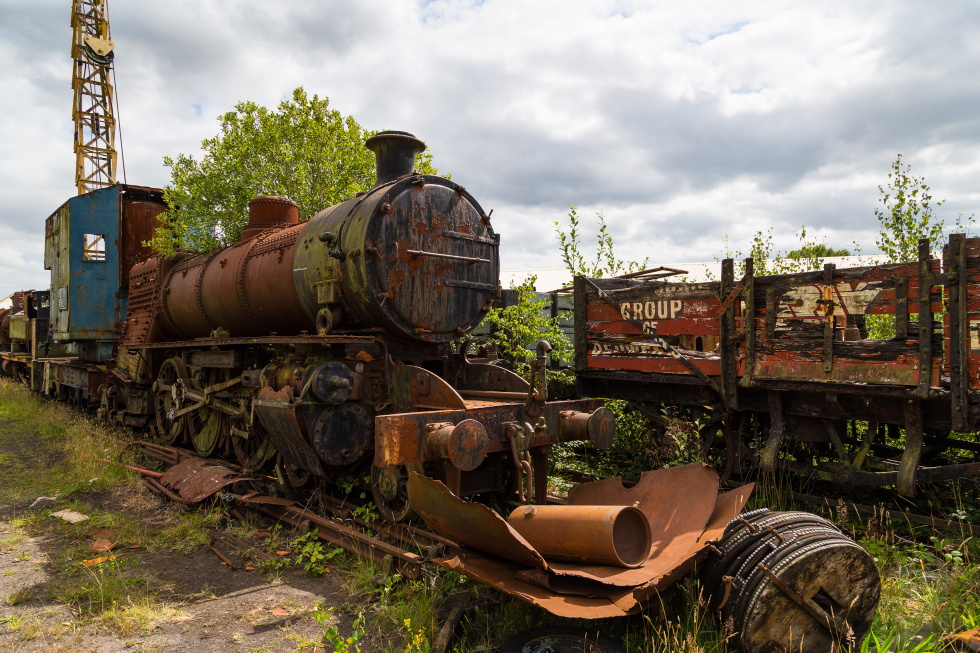
I’m conscious of the fact that this post is going on a bit now so I’ll wrap up with a trip to Easington Colliery, a place I’d first visited with my friend David back in 2014. Since the closure of the colliery the town is dominated by the listed twin junior schools, but since these have now been approved for demolition (seriously, is anything listed actually saved these days?) I wandered around taking a few snaps for the record. Nothing worth posting up here as the sky was so blown out. You can’t help but feel that their removal will take away most of what’s left of the historic fabric of the town…
Walking down the adjacent streets a boy of about 4 jumped up in a window nearby, grinned, and promptly dropped his trousers. I wasn’t sure what kind of place I was wandering round so retreated and headed down to the site of the former colliery instead – to be greeted by the sight of a car with its window smashed. By this time I was feeling a little uncomfortable, but I climbed up the re-landscaped site to the monolithic memorial we’d first looked at six years ago and set about taking a long exposure to blur the clouds beyond.
“That’s the pit cage” said a voice behind me. “Aye” I said, “Did you work here?” “Aye”, he replied. I enjoy talking to people about this kind of thing and we had a pleasant chat about the colliery and the early 90’s closure. “It was a way of life” he’d said with some sadness. “But at least they left me somewhere nice to walk my dog”. He wished me well and told me to take care of myself, reminding me of the kindness of spirit that is otherwise so badly lacking in the world today.
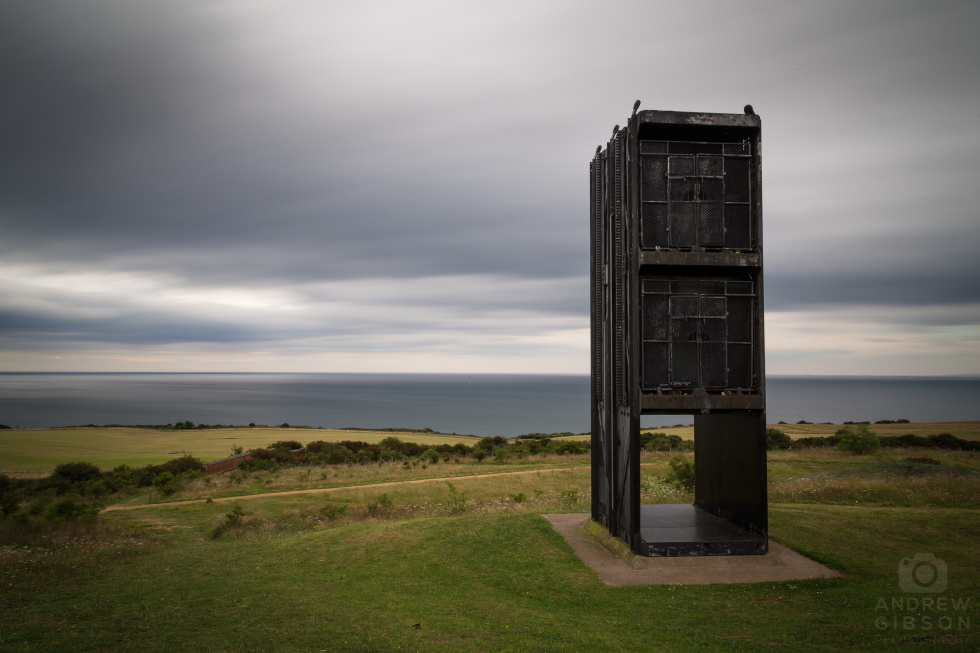
Metaphorically this statement cross between public memorial and industrial detritus with blurred clouds beyond might demonstrate the firm legacy of the colliery while time passes by around it, an alien insert in the neutralised landscape.
Or maybe it’s just somewhere to take shelter if you get caught in a bit of passing light rain. I made my way back to the car, relieved to find its windows still in tact, and drove out of town.
If you missed my earlier blog post on this area’s mining heritage take a read of Nothing to See Here, or to see what’s further down the coast on Teesside you can re-familiarise yourself with Bridging the Tees here.
It’s nice to be back out doing this kind of thing. Thanks for stopping by.
